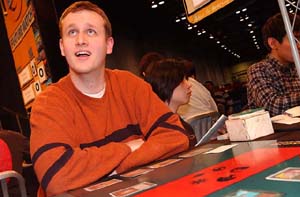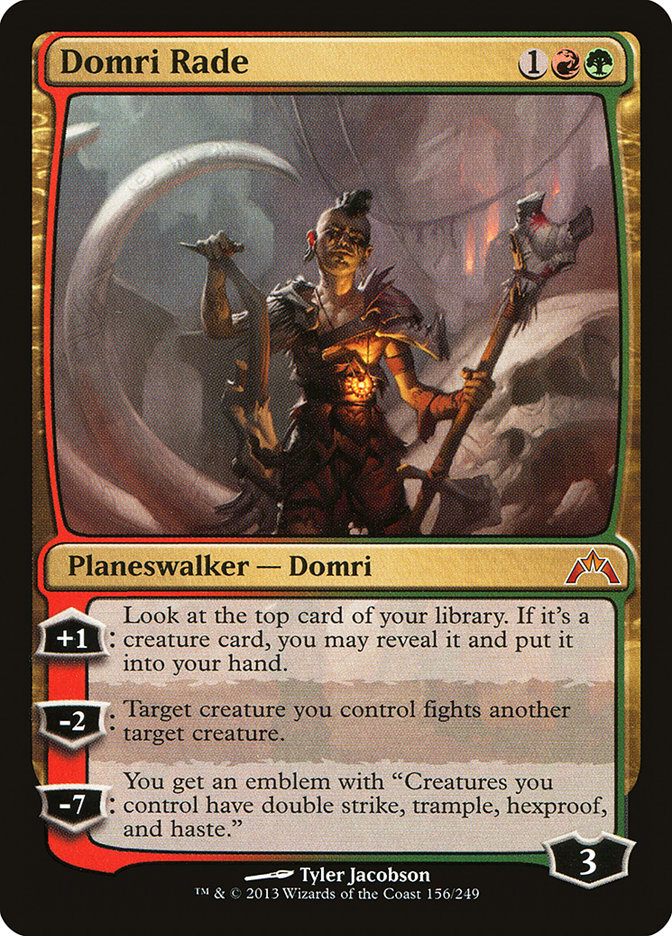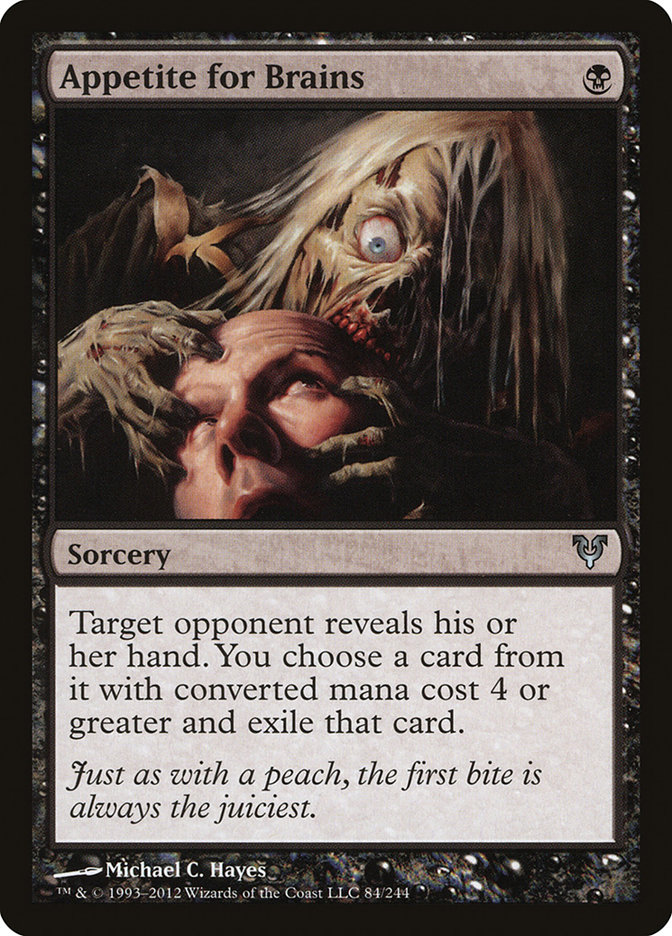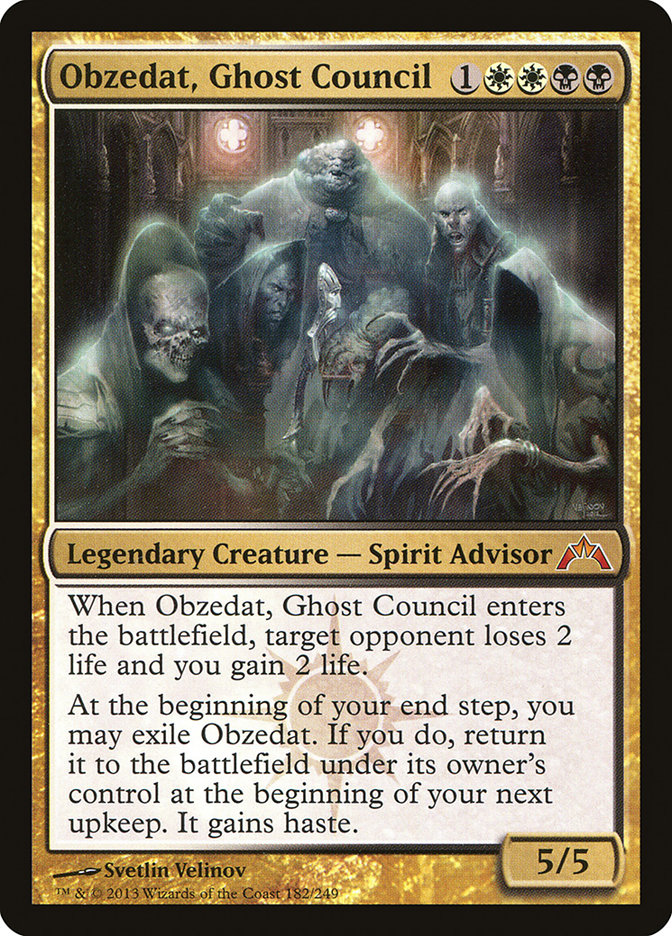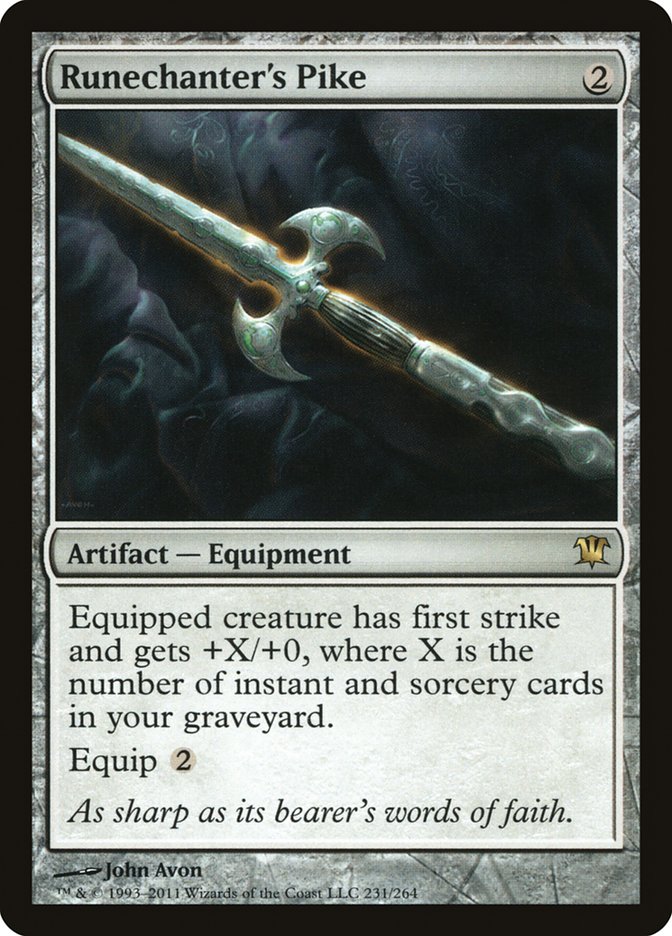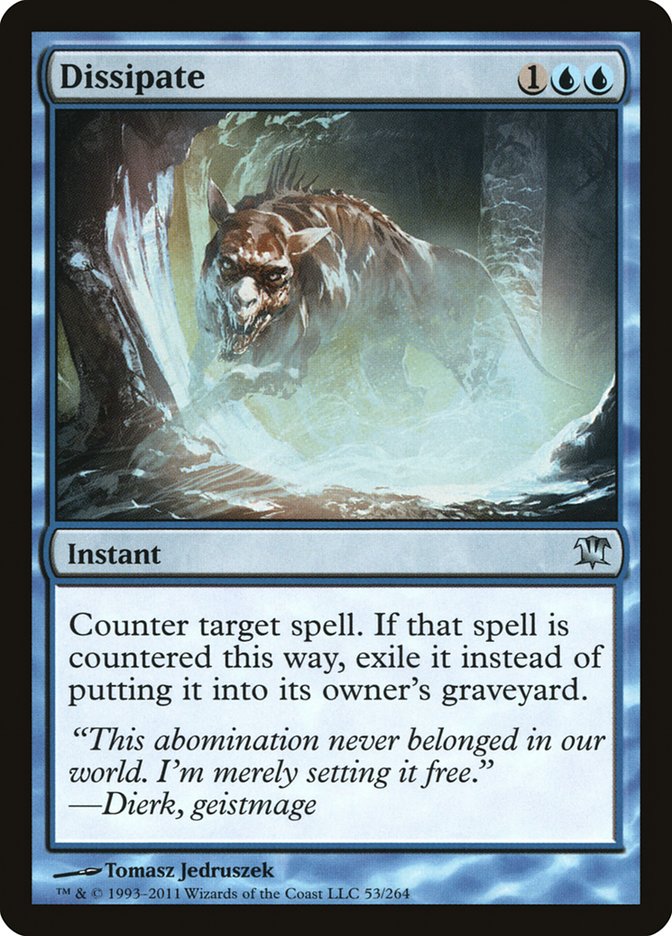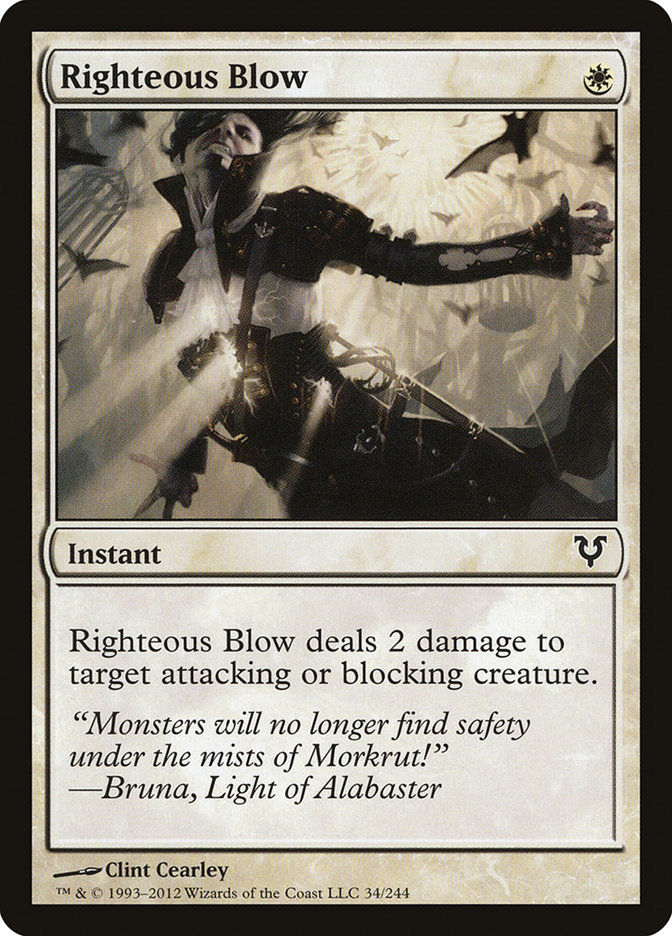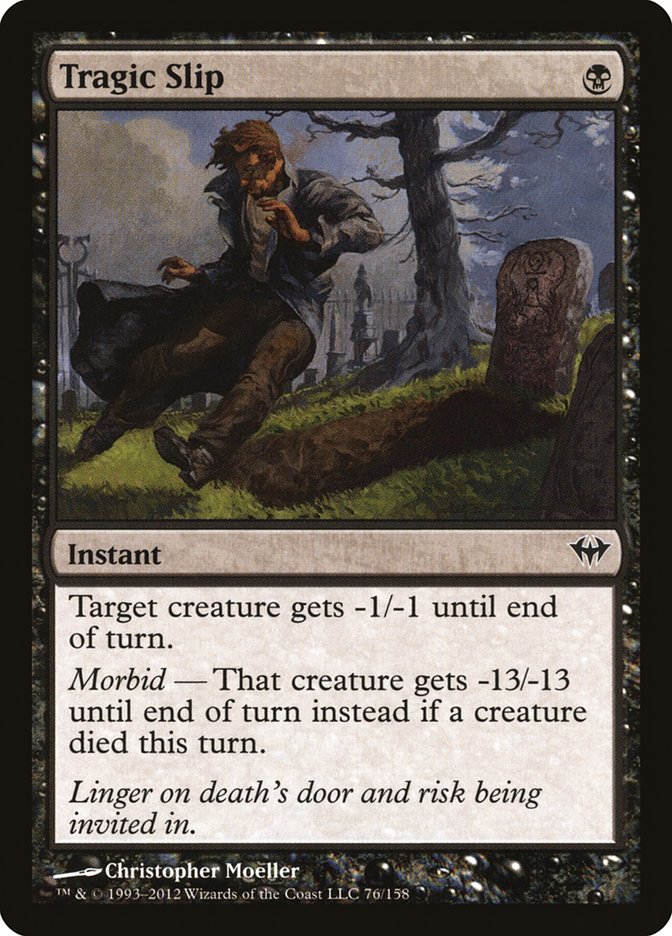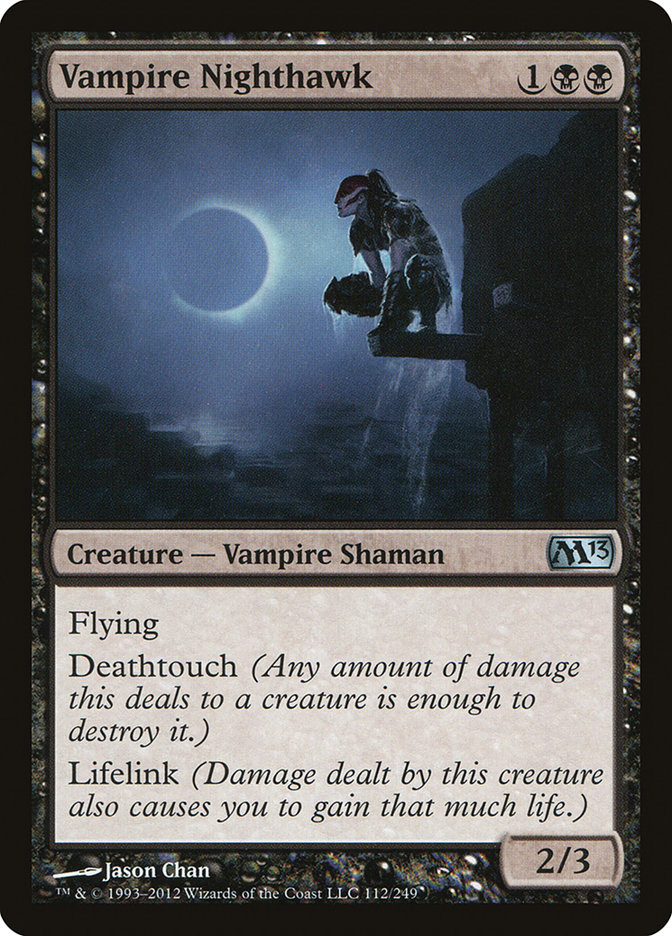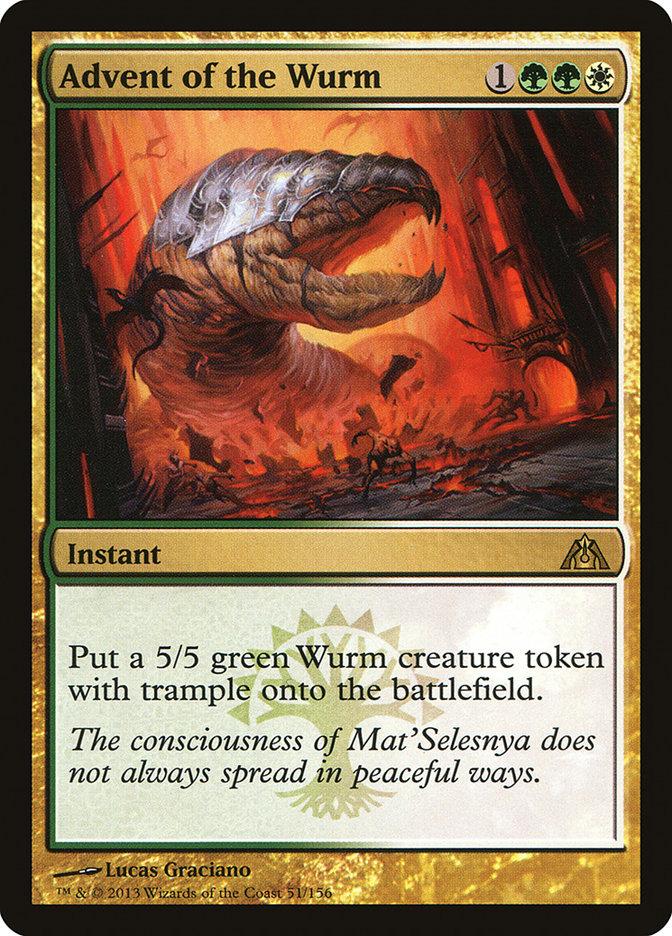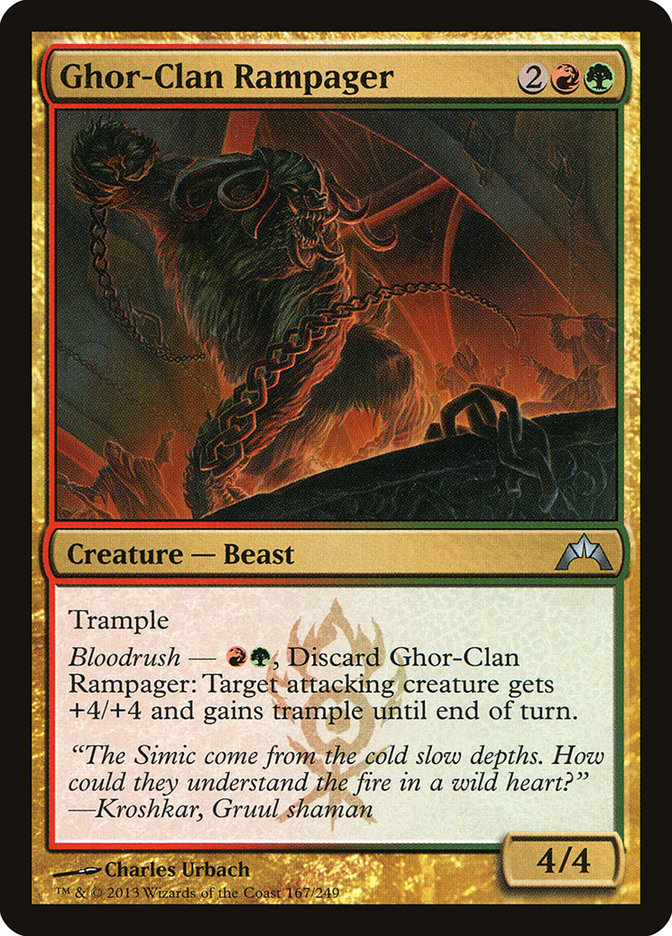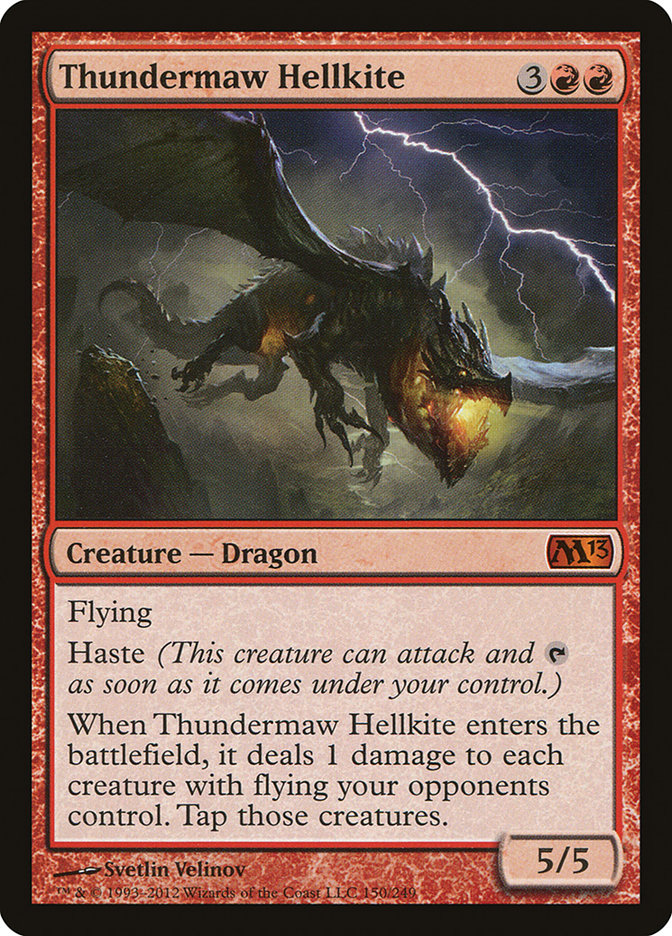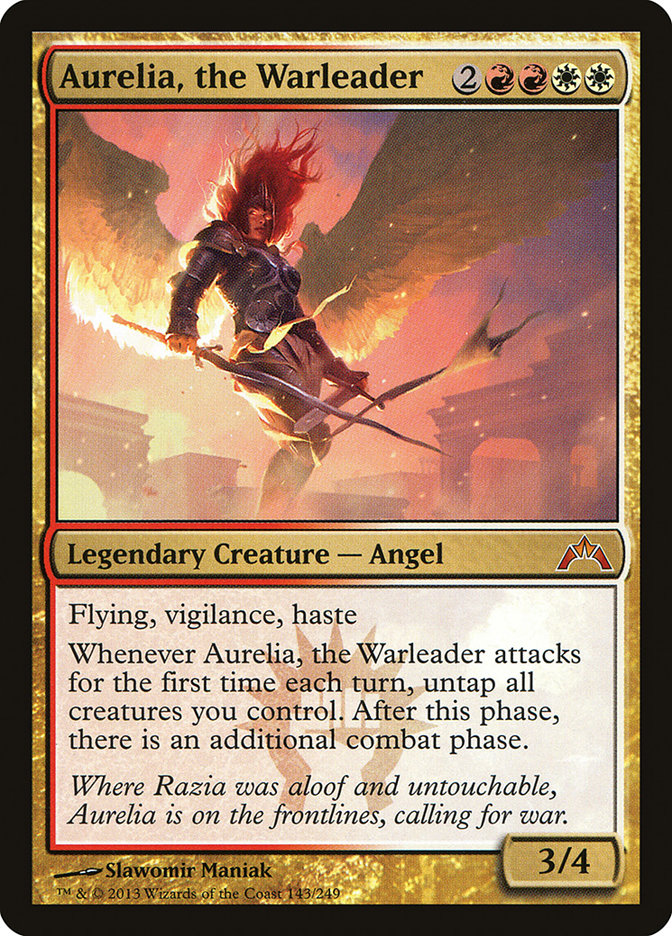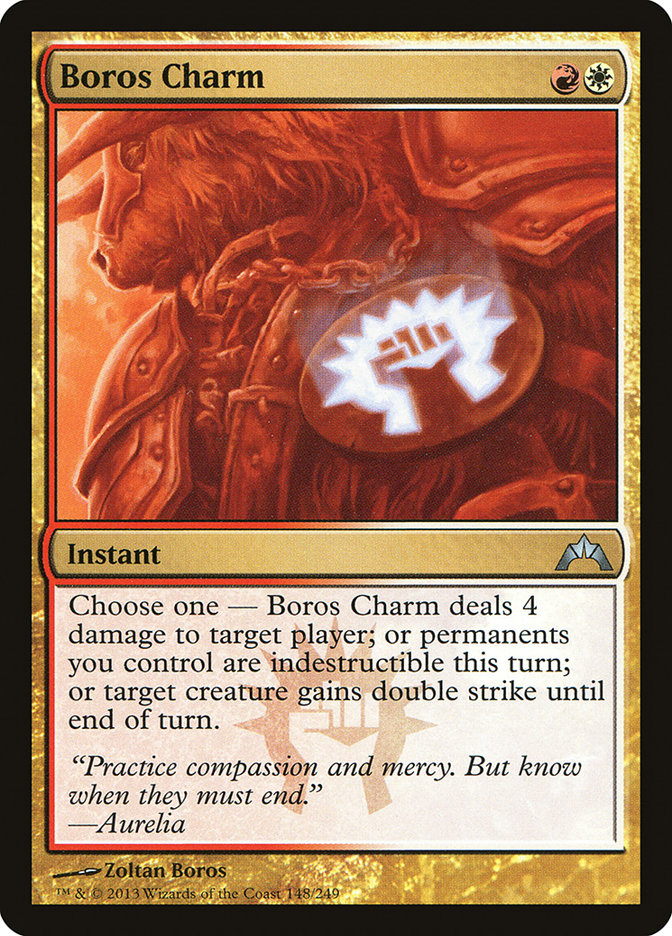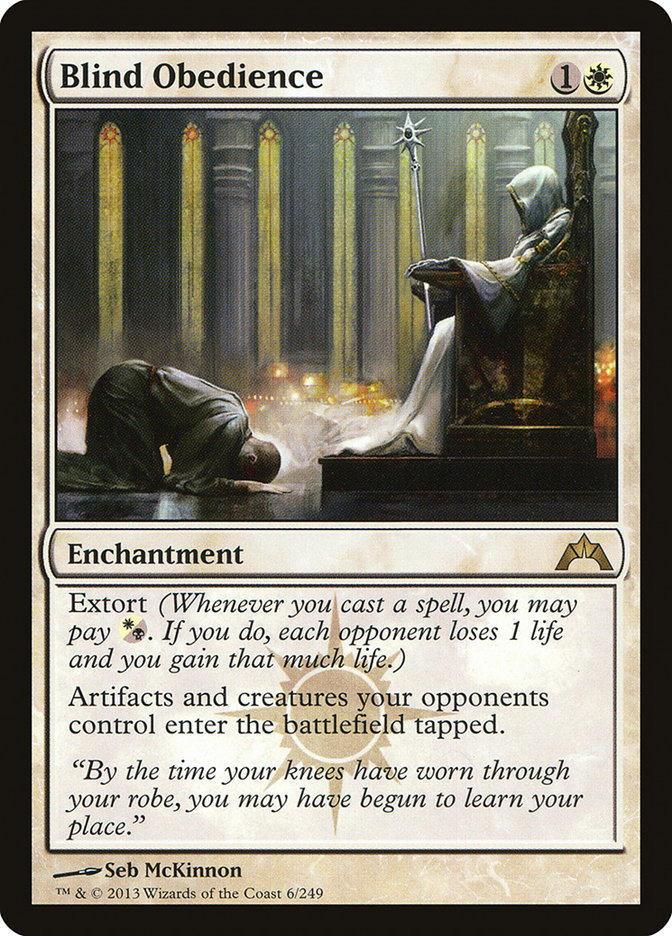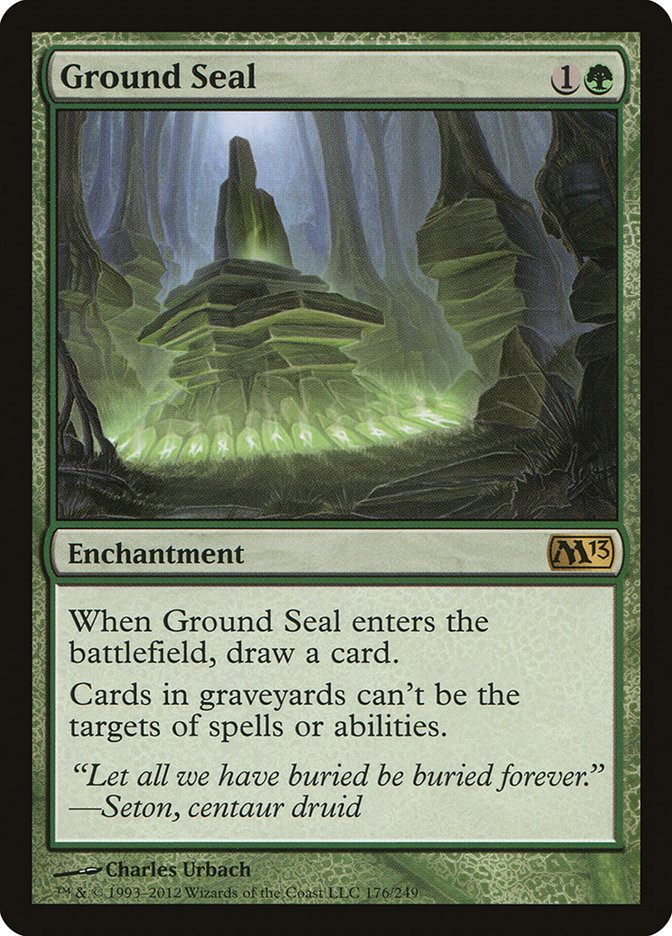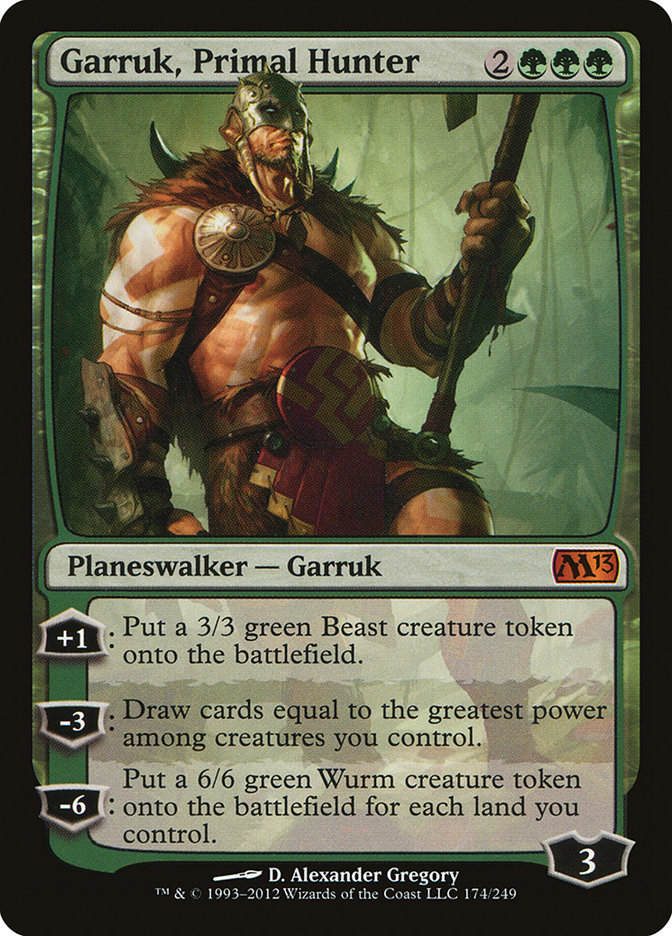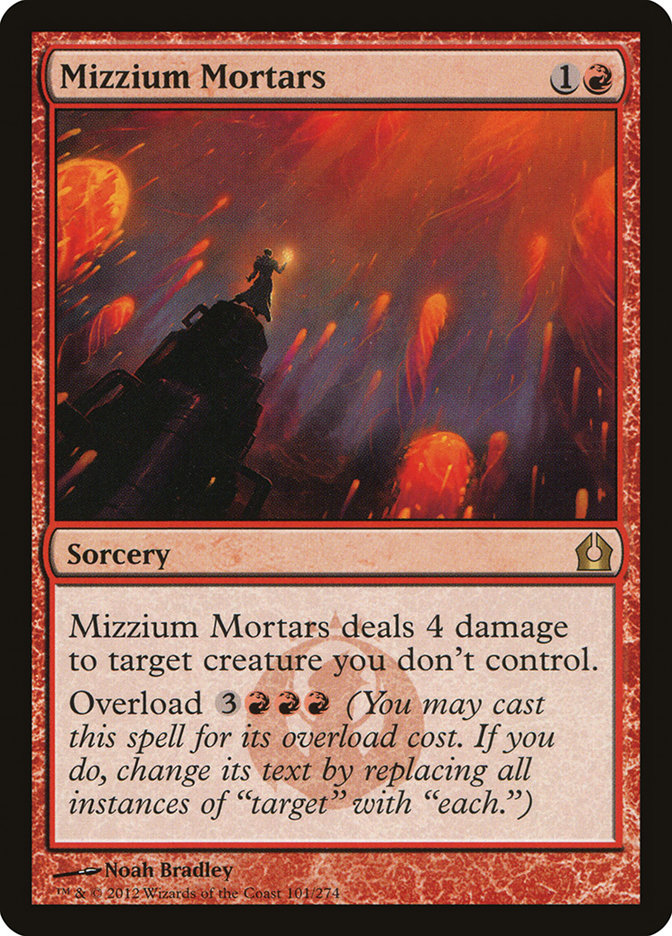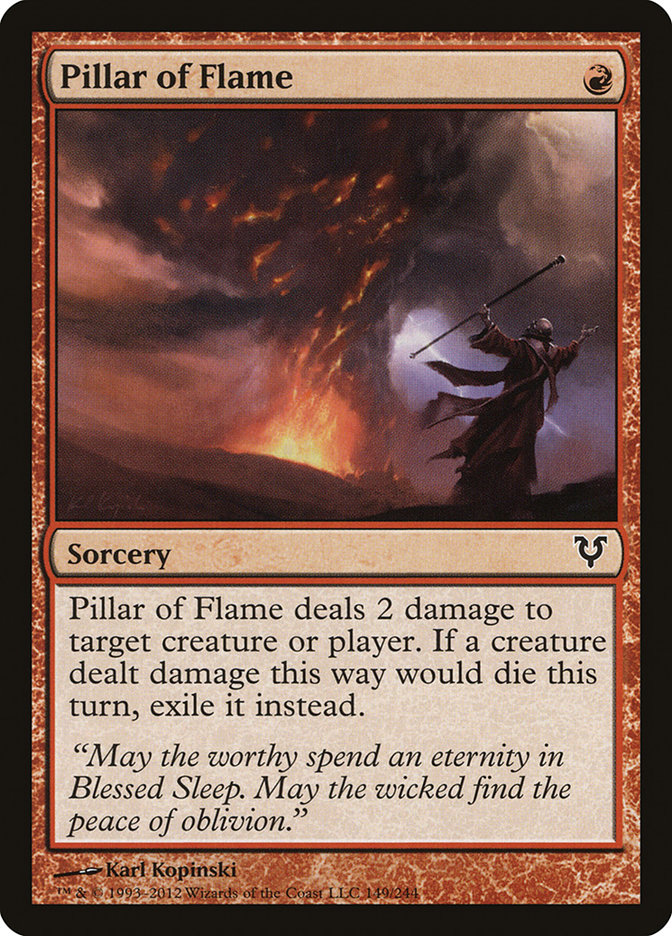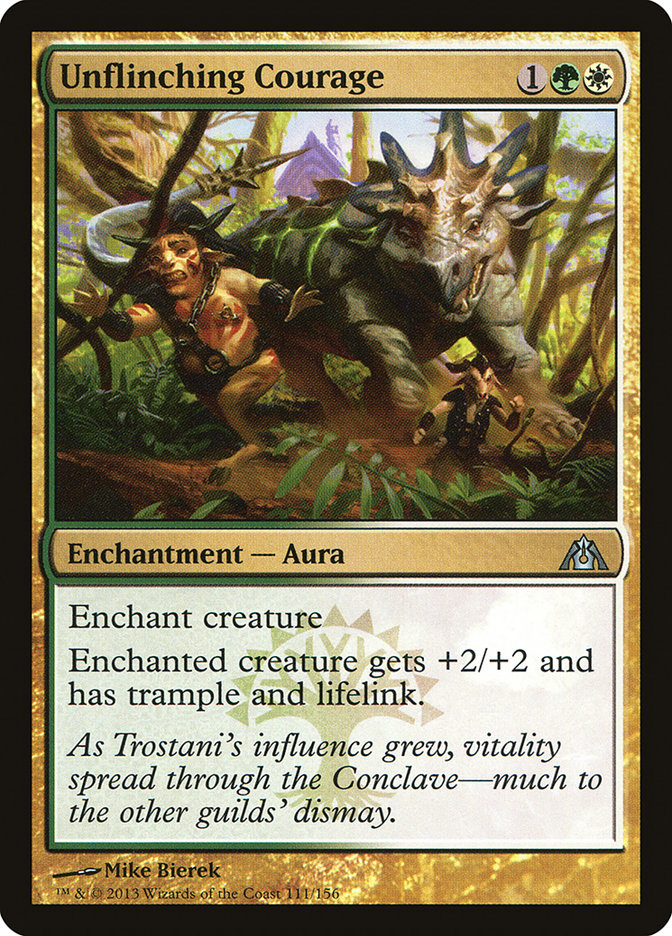One of my proudest accomplishments as a deckbuilder came many years ago. I handed two solid players, 5-Color Magic creator Kurtis Hahn and Grand Prix Kansas City champion Marc Gordon, a deck, PT Junk,* and they met in the finals of the PTQ with it. This wasn’t just any PTQ; this was a PTQ that had a lot of people in it. It had over 200, and this was in 2000 when a PTQ that large was even more noteworthy. They were the only two players in the room with my deck, and it felt amazing to see them duke it out in the finals against each other with it.
This deck would quietly go on to be one of the more successful decks in a format full of one of the most feared combo decks of all-time, Trix. I remember playing Kai Budde many times in the matchup because he didn’t believe that Junk should win. We didn’t even finish a ten set before he asked to see how it went boarded, and then he conceded that it was a great matchup for Junk.
It’s exciting to have a deck succeed. And when you have two people enter into a tournament with a deck and they go first-second, it’s something.
More recently, for example, Joe Bernal and Caleb Durward ended up in a similar position in a Chicago area Modern PTQ with a much more midrange style U/W/R Splinter Twin that, while not 75-card mirrors, was a deck they worked on together. It was a real testament to the work they put into the format.
Last weekend I met up with my old friend Ronny Serio, handed him my Big Naya deck from my last article, and took out my Esper deck from two articles ago to register for myself.
We crushed. In the Top 8, he lost no games, and I only lost a match against him.
It was pretty damned awesome feeling (even though I was sad to not win the whole thing).
As we sat down against each other and shuffled, I could see this rueful look on Ronny’s face. "I thought about just conceding to you, but I don’t think you would want that," he said.
"Well, I’d never ask you to concede, Ronny. I know how much this means to you too."
Ronny is old school. The Crew. For those of you who don’t know what that means, this is one of the very first organized Pro Tour teams, one of the very first groups of people to actually make slang. Their only surviving remnant of slang is probably this: "beatings." The most famous member of The Crew was PT Hall of Famer Bob Maher, though PT historians might remember names like Marc Aquino (Top 4 of PT Washington DC) among others.
I think the last time Ron and I had played was in 2007, when I beat him in the Top 8 of a Time Spiral Block PTQ with The Baron. Before that, the last time we’d play was in 1999 at Pro Tour New York; we drew in the last round of day 1. He was up a game when he offered me the draw so we could both make day 2. Normally, I hate things like this because it feels like a loss. Down a game, I accepted. I ended up tied for Top 8 of this event, my best finish in a PT ever, but unfortunately just missed Top 8 on tiebreakers.
Here we were again. That Pro Tour in 1999 was Ronny’s last Pro Tour. At some point he’d taken time off of the game, and he’d been playing since but not dedicating himself to the game the way he and I both had in the ’90s. I knew he wanted to go. He had other old school friends (like #SCGMKE winner and Junior PT Top 8er Adam Jansen) qualified for the event for the first time in forever. I definitely wouldn’t ask him to concede.
So we sat down, and we played. Me with Esper Control. Him with Big Naya.
Aaaaaand he crushed me.
So it goes.
Here are our respective paths, which I posted to my Facebook page during the event:
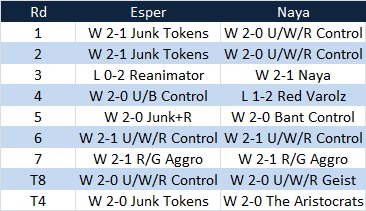
At the end, we had these records:
Esper Control: 8-2 (16-8 in games)
Big Naya: 9-1 (19-5 in games)
Let’s look at the decks.
Esper Control
I’ve been playing Esper Control for a little while. It basically started in very early May in an impromptu conversation with another old schooler, Brian Davis (of PT Chicago and Bob Maher fame) when we were talking about life and #SCGNASH, which was coming up.
I told Brian that I was frustrated with the decks I was playing in Standard, and he said something very compelling:
"Here’s the Elephant."
Okay.
Wow.
When someone hands you an Elephant for a deck, it is usually a sign that they’ve put a great deal of effort into a deck. Brian went on to say that the deck had been winning for a number of people he was friends with, including in higher profile events and including when it was played by less skilled players.
Here is that initial list:
Creatures (6)
Planeswalkers (4)
Lands (28)
Spells (22)

I would play this deck a lot over the next weeks and evolve it a little here and there as I went. One of the biggest fundamental changes I made was dropping the Augur and becoming a Thought Scour / Snapcaster Mage deck. This was largely inspired by some work of Matt Nass on another archetype, but it really is a fundamental change in some ways. There were other changes, of course, and I’ve written about them. I took the deck I arrived at to the WMCQ in Chicago and placed 3rd (not 4th as I saw elsewhere—a quibble, but I’m a quibbler).
Creatures (4)
Planeswalkers (4)
Lands (23)
Spells (29)

I really did love the deck. On the day of the PTQ where Ronny Serio and I played, I was really struggling between Esper Control and my Big Naya deck, largely because they both were really compelling but I thought that the Naya deck might actually be the stronger one. That being said, I also had slightly less confidence in the accuracy of my assessment of the two decks because I didn’t have any Voice of Resurgences online so I hadn’t done any online grinding of Naya, only in-person testing. Ultimately, though, the decision hinged for me on something simple: I knew Ronny could excel with the Naya deck. It was just his style, and he’d enjoy it.
By the time I sat down with the new version of the deck, it had certainly changed since the WMCQ.
Here is what I played:
Creatures (4)
Planeswalkers (4)
Lands (25)
Spells (27)

Since I’ve already talked about some of the choices of this deck, I’m going to talk about something important that happened with this deck first.
I had in many ways drifted back to many of Brian’s original choices.
In some ways, this is an indication of the shifting of the metagame, and in other ways this is a testament to the successful work that Brian had put into the original design. I’ve always been a fan of making sure that you play a successful deck as designed before you tweak it, and that was certainly the case here. But the introduction of Dragon’s Maze into the mix certainly influenced how I moved with the deck, and beyond that I had my own ideas of what was reasonable.
The big shifts back:
-dialing back the mana slightly
-removing the Thought Scours
-returning to respecting Detention Sphere
Let’s examine these briefly.
Dialing Back the Mana
I had been very impressed by Nicholas Spagnolo’s Esper deck from the Invitational in December:
Planeswalkers (5)
Lands (24)
Spells (32)

One of the things that actually really impressed me when he played it was the aggressive use of basic lands, which made his late game curve out much better and seemed to cause him a bit less pain in the early and midgame. I watched the deck play many matches, and he never seemed to have mana problems (except when he didn’t draw enough in his 28-land deck). Davis’ deck, on the other hand, felt like it had "too good" of mana: too many dual-style lands when perhaps it didn’t need that many.
One of the things I was not respecting was the power of Obzedat, Ghost Council in the board.
Being able to cast an Obzedat, particularly early, is incredibly strong. Every non-black/white source is one less land to cast the card. With a ton of funky lands and two Islands, sometimes you’d have five or even six mana and not be able to cast Obzedat.
I didn’t dial the mana back completely, but I think with this mana base I finally have a really nice marriage between Brian’s mana and Nicholas’ mana. And for what this deck does, I think it is a better mana base than Brian’s choice of more dual-style lands.
Removing the Thought Scours and Respecting Detention Sphere
The thing that was compelling to me about Matt Nass’ argument about Snapcaster Mage / Thought Scour is that it provides an opportunity for card cycling and minor card advantage in a deck that might not already be using its mana to the utmost efficiency. In addition, that minor card advantage/cycling is something that can be very useful in just establishing your deck in the early and midgame.
A lot of people are proponents of Think Twice in this space, but in general I think that is insane in this metagame. There are decks that I think it makes sense to run Think Twice in (Jeff Hoogland RUG Flash deck comes to mind), but usually it seems to be very much the wrong call. I plan to write an article about that soon, so expect more in the coming weeks…
In this deck, though, I was very happy with Thought Scour.
Unfortunately, I also discovered that I was struggling a little when it came to a single card:
Well, before I got to this point, Brian Davis was already telling me that Domri was an issue. He had already shifted his version of the deck around to accommodate more access to Detention Sphere between main and board. I was, in many ways, playing catch up to him.
I knew I wanted to move to the point where I had Detention Sphere in the main, but I didn’t have any room to cut any spells that seemed reasonable. Brian, meanwhile, had shaved a single land from his 28-land deck to go to 27 and found room for what he needed.
If I followed his lead—cut the three Thought Scours, added a land, and added in the two Detention Spheres— I’d be able to do what I needed to.
I started testing it, and it was golden.
Yes, Thought Scour was good in the deck. But, ultimately, it simply wasn’t as good as action. The deck played properly simply didn’t need the effect. Brian in getting to his version of the deck had eschewed Thought Scour because the deck was good enough without it. Brian had started out, like most Esper decks did, with Think Twice and over time discovered they were actually not good in the deck even when you were a lucky ducky with Terminus. Thought Scour, which might be a better version of the same effect, simply wasn’t necessary.
Some Game 1 Tips
A lot of people watched me play and were really surprised by two things that I did:
1) Usually used Nephalia Drownyard on myself
2) Used Sorin’s –2 ability aggressively
Ultimately, though, these two things are related. You are potentially a far more aggressive deck than people give you credit for. In the non-beatdown matchups, you generally are The Beatdown. At least you are The Beatdown ideally. This is the role you should be trying to grab.
Against some decks, it can take work to get to that point. But the deck usually wins on the back of 2/1 and 3/1 creatures far more often than it wins on the back of Drownyard. This is an important thing to realize.
If you like thinking about this in martial terms, this is not a deck that wants to grapple about, maneuver into a position, and slowly take the game. What it wants to do is maneuver, sure, but it wants this: to get its hands on the opponent’s throat and squeeze.
This is a FOUR Sorin, FOUR Lingering Souls, FOUR Snapcaster Mage deck. While I did Drownyard out some opponents, the best games were like this mull to four:
Land, Land, Sorin, Lingering Souls.
Turn 3 Souls. Turn 4 Sorin (-2). Whoopsies, a topdecked Dissipate, you’re dead.
I definitely did Drown out a few opponents, but it was only about one game in five or six. In general, the most likely deck to Drown is the Aetherling opponent where you need to set up a race well before the Aetherling ever hits.
Some Sideboarding Tips
Like Brian Kowal and Gerry Thompson, I’m not a big fan of sideboarding guides. As BK has said, it is best to sideboard against an opponent, not a deck.
With that said, here are the decision points for each of the cards going in:
This card shines against Junk Reanimator where you get to forever remove cards from the reanimation lifecycle, have a ton of value targets, and some huge late-game bombs to get rid of. In that particular matchup, one of the most important cards to remove is Acidic Slime, as you don’t want your mana base to be messed with. In other matchups, you might not want a full set, but it is a reasonable to include a few to fight the top end of an opposing control deck.
This is specifically to fight control wars or spell-heavy opponents. Nothing too shocking here.
This is an interesting sideboard card, as it serves two very different purposes: survival and finishing the game.
Finishing the game is actually quite simple; in certain matchups, you want to increase your threat density to end the game. Perhaps they have something like Curse of Death’s Hold that will require you to find another way to win besides an X/1. Perhaps they have a ton of answers. Either way, Obzedat is an excellent way to beef up your potential finishers. Thus, you often bring it in against control or midrange decks.
Against the most aggressive decks, you simply don’t have the time to expect that a Sphinx’s Revelation is going to cut it. In these matchups, Obzedat, Ghost Council is brought in as both life gain and monstrously huge body.
Thus, you often end up bringing in two-to-four Obzedats in most matchups. Interestingly, it is simply worse as a maindeck card largely because any individual card in the main is more suited for a random opponent and the cards that you remove for each opponent are quite a bit different.
This is quite simple: it is brought in as a potential Hail Mary against control and Junk Reanimator and as a response to first strike from Bant Hexproof.
Another simple card: this is brought in against any deck that you have the time to make use of it, particularly if exile is a factor.
While slightly different, both of these cards come in against aggressive decks. Tragic Slip also comes in against "Elf" decks (like Junk Reanimator) and The Aristocrats. Righteous Blow is simply better against the truly aggressive decks.
A direct response to aggressive decks. If you are in a truly Naya Blitz, Mono-Red, or R/G heavy field, make this two Nighthawks by downgrading one Obzedat, Ghost Council.
Of course, it is the removal of cards that is the real trick of it all.
Anything could be cut, but here is a rough guideline:
Cut Blind Obedience against decks without haste or flash. Cut Azorius Charm against decks that are full of scary CIP effects. Cut Far // Away against decks with Lingering Souls / no creatures. Cut Detention Sphere against decks without planeswalkers, rush effects, or with Abrupt Decay. Cut countermagic against very, very fast decks. Cut Terminus against decks that don’t primarily win with creatures. Consider shaving Sorin, Sphinx’s Revelations, and Snapcaster Mage against decks where you feel you have a stronger card.
When it comes to control decks, this is a great choice, and I heartily recommend it. Hell, I got second in a PTQ and third in a WMCQ in just a few weeks. This is a good one!
Big Naya
This is the deck that won the event. I’ve been tweaking it for a while, and I’m pretty pumped about it.
Creatures (26)
- 4 Avacyn's Pilgrim
- 3 Huntmaster of the Fells
- 4 Thundermaw Hellkite
- 3 Aurelia, the Warleader
- 4 Ghor-Clan Rampager
- 4 Boros Reckoner
- 4 Voice of Resurgence
Lands (23)
Spells (11)

This deck is so powerful that when he won Ronny said that it was usually a cakewalk. In general, he had cards left over when his opponent was dead. He mulliganed incredibly well largely because it didn’t take many cards to actually kill an opponent.
A part of this is the dedication to absurdly hard-hitting creatures. The deck has:
That is a lot of dedication to damage.
When I shared this deck with my old friend DeQuan Watson, we had this exchange about the deck:
Me: Rar! SMASH!
DeQuan: Exactly!
Brilliant dialogue, I know.
I came up with this deck on May 11th, the day that Ronny Serio’s old The Crew teammate Adam Jansen won the Chicago PTQ with this deck:
Creatures (13)
Planeswalkers (3)
Lands (24)
Spells (20)

On the drive home, my mind was ablaze with some of the things I’d seen that day. Voice of Resurgence was everywhere, particularly in people’s Junk Aristocrats decks. A large contingent of Madison players had shown up with Sam Black list. They all did poorly, but Voice still impressed me.
I concocted an initial list on the drive home, called my friend Ben Rasmussen, secured four copies of Voice of Resurgence from him, and tried to get some sleep for the PTQ.
Unfortunately, when Ben arrived, he forgot to bring them. Needless to say, it was a hard tournament to find Voice of Resurgence at ten minutes before the event. I played a rough version of the Esper deck, wasn’t exactly happy with it but wasn’t exactly put off the deck either, and then spent the rest of the day playtesting Big Naya.
It was freakin’ awesome.
Here is where the list developed between that day and #SCGNASH (influenced by Osyp Lebedowicz input):
Creatures (23)
- 4 Avacyn's Pilgrim
- 4 Thundermaw Hellkite
- 3 Aurelia, the Warleader
- 4 Ghor-Clan Rampager
- 4 Boros Reckoner
- 4 Voice of Resurgence
Lands (23)
Spells (14)

I wrote about this deck in my last article as a possible response to Standard. I still think it is a great call.
How my current deck is different from the list I posted is simple: I followed my own advice in my article.
The deck is only three cards different in the maindeck: Three Huntmaster of the Fells instead of three Boros Charms. In the metagame that seemed to be present in the room, it looked like there was a fairly aggressive field. In that kind of room, Huntmaster of the Fells is wildly superior. Boros Charm is a truly great card, but sometimes you don’t need a great (if greedy) card; sometimes you need to just live another turn.
Huntmaster of the Fells was actually a part of my original imagining of the deck. In my head while driving home from Chicago, I kept picturing a Huntmaster of the Fells and a Voice of Resurgence in play. That night, I literally had dreams about them both in play.
Just think about what it means. I’m not going to tell you. Just think about it.
The deck is actually fairly simple to play in the most classic midrange sense. This is a midrange beatdown deck, but nonetheless it’s the usual story:
Against (more) aggressive decks, establish the board; against (more) controlling decks, beat them the hell down.
Now, there is the situation that is the exception: the race against the other aggressive deck. This is rare, but it definitely happens. Advent of the Wurm is pretty good at turning the table, particularly if it is followed up with another heavy hitter. A common insane game, for example, includes an Advent into Aurelia turning the tide when an opponent thought they were safe on the attack against an empty table and then was dead. Sixteen trample/evasion damage is pretty absurd.
Some Game 1 Tips
The biggest thing here is identifying the pacing of your game. Sometimes it can be more important to drop a Pilgrim or a Farseek to play for the next turn rather than the current turn. In order to make these kinds of calls, it is important to know the metagame enough to understand what the likely course of the next two or three turns will be.
I know that when Ronny came to me after his rounds his wins were usually overwhelming. A part of that is the damage potential of the deck, and the other part is Ronny’s years-long skill in managing damage dealing. Knowing when to slow a game down and when to speed it up is a part of that. Ultimately, these questions are really a measure of how well you understand how to deal damage. Unfortunately, that discussion is really a much longer one that can be included in a section of an article; it is an article all its own (and a long one).
The biggest challenge for this deck is against the most aggressive decks. Here, you really do need to blunt their damage. A deck like Naya Humans can have you on the back foot and barely hanging on before you even have a chance to establish yourself. In these kinds of matches, try to be conservative with your life total. Unless you feel like you have to set up a race, instead try to draw out the game and preserve your life total over dealing damage. If you last through the initial rush, you will kill them unless they have some kind of final reach to finish you.
Some Sideboarding Tips
Once again, we’re going to go through card-by-card:
This card is there for two things: to act as The Best Counterspell ever versus removal-based controlling decks and to fight against Thragtusk. Boros Charm can do an incredible amount of damage in a number of ways. In conjunction with Ghor-Clan Rampager or Aurelia, the Warleader, it is absurd. In a Jund-heavy format, I advocate for it to be a maindeck card, but in the now this is a sideboard card.
Bring this card in against haste and flash decks as well as against token-based decks. In the aggressive matchups, Blind Obedience can hugely blunt the potential offensive power of the opponent. Against decks with Restoration Angel, it can be damning to a defense. A Thragtusk on D can be a huge deal, particularly with open mana. With a Blind Obedience in play, it becomes much less scary.
This is a one-two punch. You bring in the Ground Seal against decks where you want a touch of graveyard hate but don’t want to dedicate yourself to it. This is basically all of the Snapcaster Mage decks. Then, against true graveyard decks, you add in Rest in Peace. In combination in those second matchups, this is pretty damned awesome because you never really feel like you’re losing out.
People often ask "why no Domri Rade?" A big part of the reason is that the deck already has a large number of noncreatures. Between 24 lands, four Farseeks, four Advent of the Wurms, and two other spells, you only have 27 creature spells. That sounds like a lot, but in practice once you start filling in Domri Rade, remember you end up cutting into those precious 27. In the matchups where you’re grinding, Garruk is better suited to the job even if Domri is amazing.
This is a combination of your early defense against creatures as well as your long-game fight against certain matchups. Both of these cards come in against the most aggressive decks. Two or three of the Mortars also come in in the midrange matchups. Pillar comes in against Voice of Resurgence as well.
Both of these cards are about a race. In my earlier article, I had Ray of Revelation and Clinging Mists as specific answers to Bant Hexproof. A part of the reason that I went this way instead for the PTQ was simple: I didn’t see much Bant Hexproof before the tournament and instead saw a lot of more pure aggressive decks.
Unlike the Esper deck, this deck is full of cards that can be shaved. Essentially, any card that is not truly optimal in a matchup can be shaved down one or two copies in practically any matchup based on your judgment of their deck and play style. Beyond that, the most common cards to cut are Voice of Resurgence (when their ability is simply underwhelming), Boros Reckoner (against decks that don’t care about a 3/3), Advent of the Wurm (against heavy bounce), Huntmaster of the Fells (against decks where you need to beat their face), and Ghor-Clan Rampager (where you are on the back foot or they have a ridiculous amount of instant removal).
Conclusion
I’m incredibly proud of the results of this tournament. Ronny and I were the only people in the room playing copies of my decks, and it was exciting to go first-second. Obviously, this was only a PTQ that happened simultaneously to the largest Magic (no, TCG) event of all-time. But it still feels great. Of course, it is no Pro Tour Houston, where Team YMG got first, second, and third with three different decks and Justin Gary really solidified the case for himself as a serious consideration for the Magic Hall of Fame, but hey, it’s hard to compete with one of the most impressive Magic accomplishments of all time.**
This is a much smaller accomplishment, but I’m still proud of it. I know that over the remainder of the season I’m planning on playing one of these two decks depending on how the metagame plays out. You probably should think about it too.
Until next week,
www.facebook.com/AdrianLSullivan
*For the historians, here is 2000 era PT Junk:
4 Duress
3 Skyshroud Elite
2 Powder Keg
3 Cursed Scroll
4 Phyrexian Negator
4 Blastoderm
4 River Boa
3 Seal of Cleansing
3 Demonic Consultation
3 Swords to Plowshares
4 Tithe
3 Mox Diamond
2 Grasslands
4 Wasteland
4 Treetop Village
4 Scrubland[/author]“][author name="Scrubland"]Scrubland[/author]
3 Bayou
3 Savannah
Sideboard:
3 Massacre
3 Perish
3 Ebony Charm
3 Wax // Wane
3 Choke
** YMG placed first, second, and third in the Swiss and then finished first, second, and third in the tournament, only losing a game to each other the whole tournament. Justin played Turbo Oath, Rob played Monoblack Reanimator, and Darwin played The Rock. That is, quite honestly, one of the most insane things I’ve ever heard of in Magic.
Also, check out this picture of a young Bob Maher, who was also in the Top 8 of that event with a Sutured Ghoul Reanimator deck by Victor van de Broeck. Awesome!
